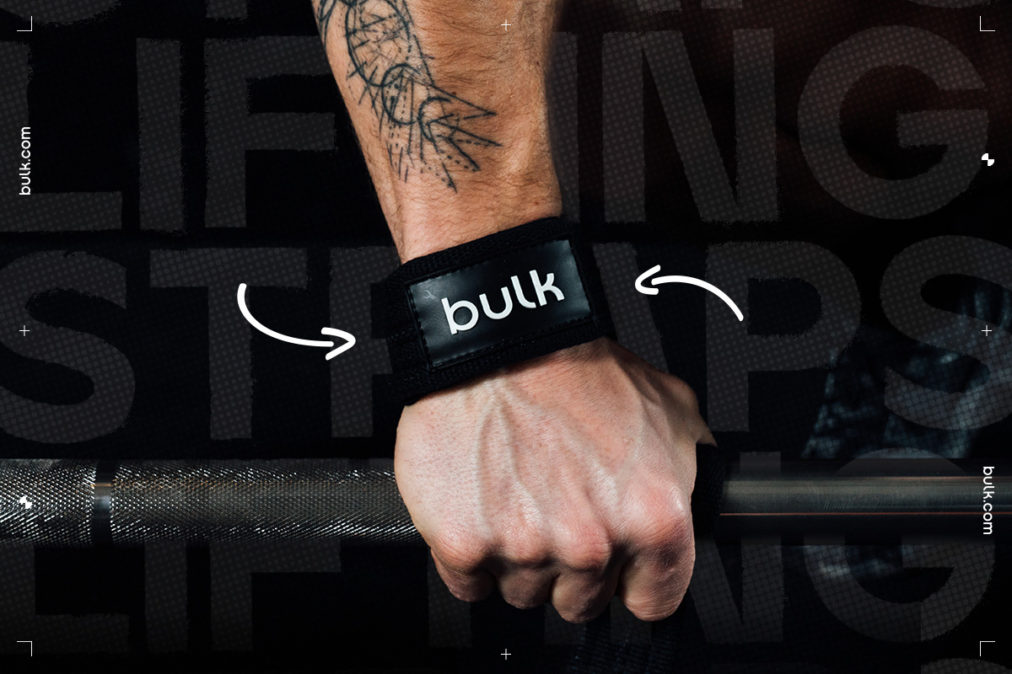Lifting straps are far from complex pieces of equipment. Despite this, many people don’t understand how to use them. Not only is this a little dangerous, it also prevents people from reaching their true potential as a lifter. That just won’t do. As a result, we’ve put together this simple guide on how to use lifting straps, including how to put them on and which exercises to use them for.
So strap yourself in because a whole new world of lifting is within your grasp. Or grip.
What are lifting straps?
Lifting straps are ergogenic aids used to help with pulling movements in the gym, such as deadlifts, pull-ups and rows. Lifting straps displace the weight from your fingers onto your wrists, meaning those who wear them can lift more weight than their natural grip would otherwise allow them to.
How to use lifting straps
Here’s a quick summary on how to use lifting straps:
- Loop and thread your strap lifting straps through the gap, and place them around your wrists.
- Ensure the long part of the strap flows between the thumb and index finger, as shown above in video.
- With one hand, wrap one of the straps around the bar. To do this, wrap it under and over (not over and under).
- Many people like to wrap the straps around multiple times, but this isn’t necessary.
- Tighten the grip of the bar by holding it with your spare hand, and twist the strapped hand around (a bit like a motorbike). You should feel the material tighten against your palm.
- Repeat with the other hand. This is tricky the first few times with your spare hand is strapped up, but you develop the skill pretty quickly.
- Ensure both grips are equally tight before you pull.
How do lifting straps work?
Lifting straps work by taking the limiting factor of grip strength out of the equation. This takes much of the pressure off of your grip. So instead of your fingers needing to hang onto the barbell for dear life, the straps will do a lot of the heavy lifting. Quite literally.
This is particularly useful for people with weak grip strength, allowing them to lift much heavier weights than the rest of their body is capable of.
A good example of this is in the deadlift. With natural grip strength out of the picture, it allows your legs and back to be tested to their maximum amount, without the bar slipping out of your fingers.
Do lifting straps allow you to lift more?
Yes. Lifting straps essentially removes the limiting factor of grip strength. This means you can lift more, even if your natural grip would not allow it.
Although lifting straps are great to use for your larger lifts, it’s wise to ensure your natural grip is also trained. Try and do at least one heavy set without the straps. If you use a mixed grip with lifting chalk, you should be able to manage it.
It’s wise to reserve straps for when your grip gives out before the rest of your body. In other words, your grip is the limiting factor, and you could comfortably lift it if you lose your grip.
Which exercises can you use lifting straps on?
Deadlift (and Deadlift variations)
Lifting straps tend to be used by people training deadlifts to heavy weights. Not only are they useful for low rep, high-intensity sets, but for high volume sets too. Grip strength is a limiting factor for many people’s deadlifts since the weight is often 1-2x their body weight. Lifting straps offset this and allow you to lift a weight your legs, core and back are capable of.
Having a load 1-2x your bodyweight in your fingers and palms is too much for many people, even if they’re using a mixed grip. The hook grip is a problem solver for this, and many powerlifters use it. However, for the average lifter, lifting straps are a great option. Even some competitive powerlifters use lifting straps in training, allowing them to max out their load without worrying about grip strength.
Pull Ups
Can you use lifting straps for pull-ups? Of course you can. Just treat the pull-up bar like a barbell, strapping the same way.
Rows
Lifting straps are great for pretty much every pulling movement, which includes Lat Pulldowns and Rows.
Are lifting straps worth it?
If you’re serious about improving your strength, lifting straps are a necessary piece of kit. Even if you have ambitions to compete in powerlifting (where lifting straps are not allowed in competition), training with lifting straps helps train to a maximal level while you improve your natural grip strength.
Lifting straps allow you to instantly improve your capacity to pull heavier weights or more reps.

Do lifting straps prevent calluses?
Yes, lifting straps can prevent calluses by removing tension and friction away from the palm, reducing rubbing and friction on the hands.
That being said, calluses are a natural and inevitable part of training with barbells, so don’t be too worried about developing them. Once you do develop calluses, however, it’s very easy for them to peel off and become soref if you lift a barbell without straps.
Are lifting straps allowed in powerlifting?
No, lifting straps are not allowed in powerlifting competitions.
However, this does not mean powerlifters shouldn’t consider using them to train. As mentioned, lifting straps help you look after the skin on your hands, making calluses less likely to peel off.
Training without lifting straps will help build grip strength. But if you’re a beginner or novice, straps allow you to train to your maximum weight. You can train grip strength alongside by incorporating sets without straps and doing grip-specific exercises such as hanging from a pull-up bar.
Are lifting straps the same as wrist wraps?
No, wrist wraps are different from lifting straps. Wrist wraps support the wrist in push exercises such as a bench press. As a general rule, wrist wraps are for pushing, and lifting straps are for pulling.
Why use lifting straps? Key benefits
- Offsets the limiting factor of grip strength.
- Helps you lift heavier weight.
- Protects your calluses from peeling off.
- Easy to use and carry.
- Inexpensive addition to your kit.
Related Products
Related articles
Eager to learn more? We believe that every person, with support, has the right to transform their lives through fitness. That’s why we’ve put together hundreds of articles with expert advice, all to help you on your fitness journey.



















